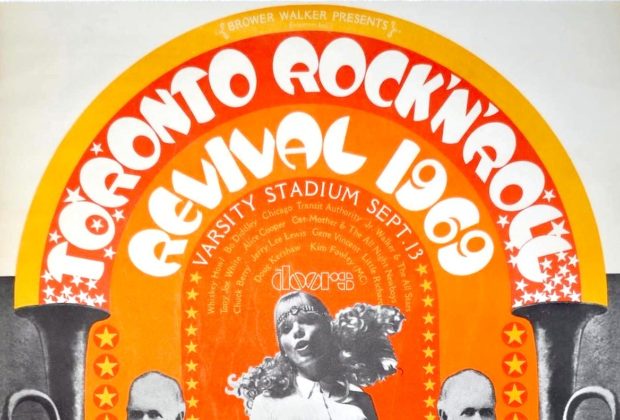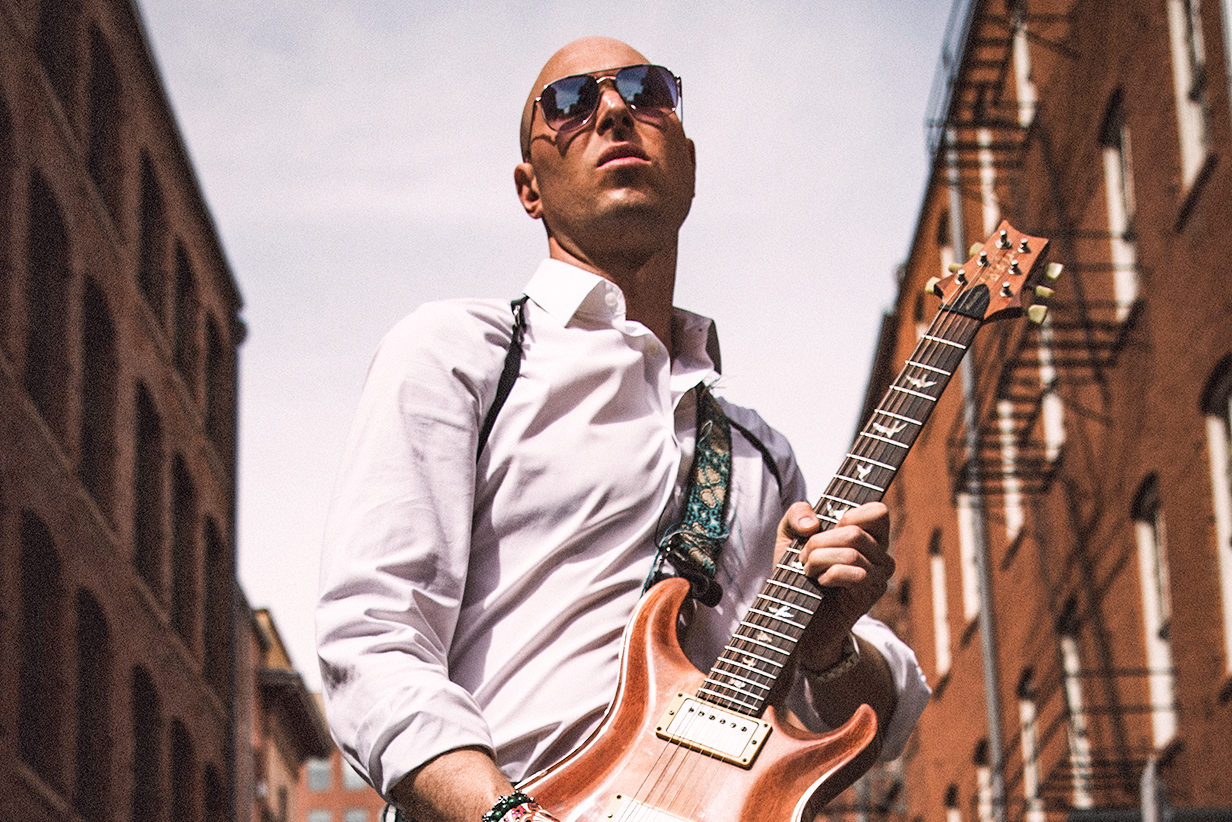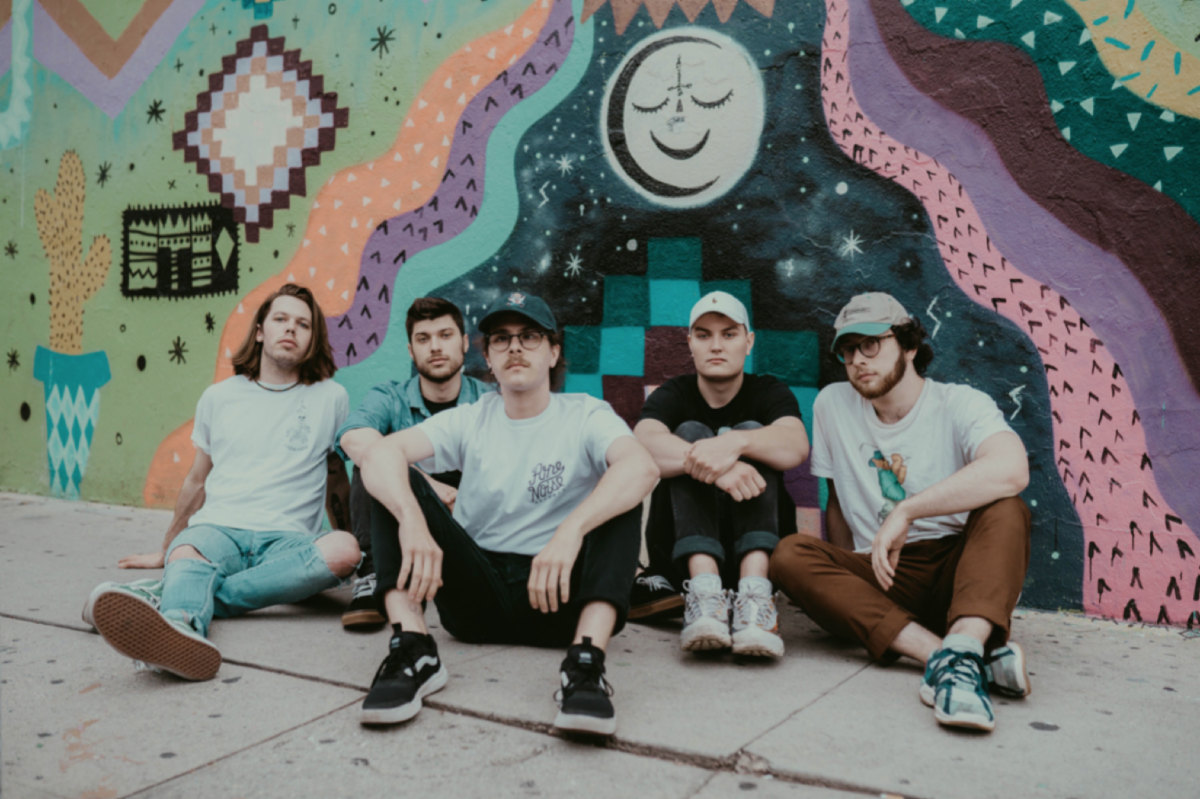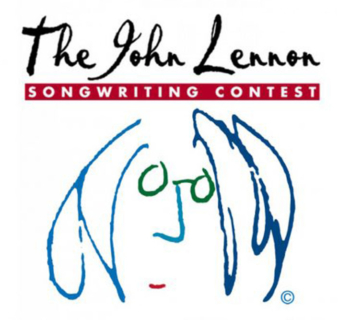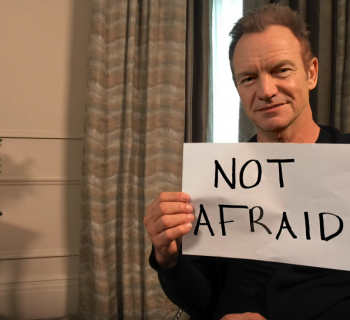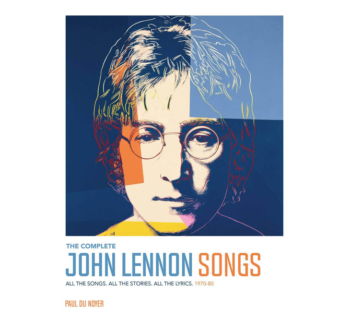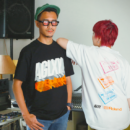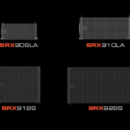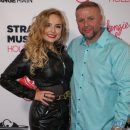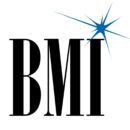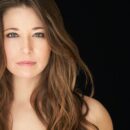It was on an invitation from record producer, songwriter and rock & roll publicist Kim Fowley that made John Lennon and wife Yoko Ono hop on a plane from England with guitarist Eric Clapton, bassist Klaus Voormann and drummer Alan White to travel to the Toronto Rock ’N’ Roll Revival festival that showcased some of Lennon’s early rock & roll musical heroes—among them Bo Diddley, Jerry Lee Lewis, Chuck Berry and Little Richard. The Doors and Alice Cooper were among the other acts at the outdoor venue.
Author broadcaster and music historian Ritchie Yorke in his 2009 liner notes to the D.A. Pennebaker-directed John Lennon/Plastic Ono Band Live Peace In Toronto ’69 DVD retail release from Shout! Factory wrote, “At Varsity Stadium, the jet-lagged John was extremely nervous. He hadn’t been on stage in three years, and he admitted to throwing up from nervousness before the show—with abundant reason. ‘Imagine if you were in the Beatles from the beginning, and you were never in any other band?’ he postulated. ‘Then all of a sudden, you’re going onstage with this group who’ve never played live together, anywhere. We formed on the plane coming over here, and now we’re gonna play in front of 20,000 people.’
“A quick backstage rehearsal, and guest emcee Kim Fowley urged the audience to fire up their lighters and matches—and in the process light their communal fire, the early uprising of collective consciousness—to welcome onstage the Plastic Ono Band, in their debut performance.
“Back in London after the momentous weekend in Canada, John was exuberant about the experience of being onstage again.
‘“I can’t remember when I had such a good time,’ he enthused. ‘We did all the old things from the Cavern days in Liverpool. Yoko, who you could say was playing ‘bag,’ was holding a piece of paper with the words to the songs in front of me. But then she suddenly disappeared into her bag in the middle of the performance, and I had to make [the words] up because it’s so long since I sang them that I’ve forgotten most of them. But it didn’t seem to matter.’
“History has shown it was this concert that finally convinced John there was indeed life beyond the Beatles.”
Academy Award-winning director D.A. Pennebaker (Dont Look Back, Monterey Pop, The War Room), with this September 13, 1969 concert film from Varsity Stadium in Toronto, Canada, documented one of the important and historical moments in the career and life of John Lennon. This has become part of our global memory.
John Lennon & The Plastic Ono Band Live In Toronto ’69 is a rare look at one of the world’s most influential popular artists at a pivotal time in his journey.
Pennebaker documented Lennon and The Plastic Ono Band on the eve of the release of the Abbey Road LP—the last Beatles album to be recorded (although Let It Be was the last to be released)—this is the only performance ever caught on film of John Lennon and the Plastic Ono Band.
John Lennon/Plastic Ono Band Live Peace In Toronto DVD performances are:
"Bo Diddley" – Bo Diddley
"Hound Dog" – Jerry Lee Lewis
"Lucille" – Little Richard
"Blue Suede Shoes" – John Lennon
"Money" – John Lennon
"Dizzy Miss Lizzy" – John Lennon
"Yer Blues" – John Lennon
"Cold Turkey" – John Lennon
"Give Peace A Chance" – John Lennon
"Don’t Worry Kyoko (Mummy’s Only Looking For Her Hand In The Snow)" – Yoko Ono
"John, John (Let’s Hope For Peace)" – Yoko Ono
Also included is an interview from 1988 with Yoko Ono.
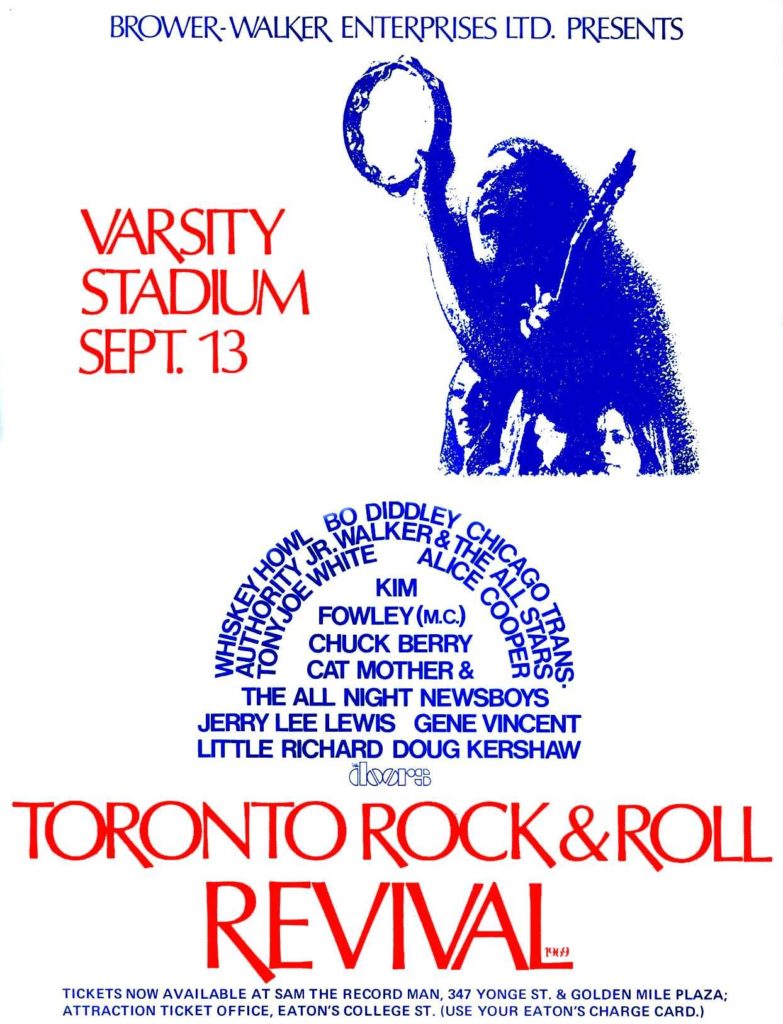
During 2000, 2008, 2018 and 2019 I interviewed Kim Fowley, Sirius XM deejay Rodney Bingenheimer, who in 1969 was then a reporter for GO! Magazine, the Toronto promoter John Brower, drummer, John Densmore, co-founder of the Doors, the acclaimed filmmaker, D.A. Pennebaker, and a new memoir text from Toronto-based writer Gary Pig Gold about this landmark event.
Kim Fowley
Q: You were the Master Of Ceremonies in Toronto, Canada, where John Lennon debuted The Plastic Ono Band on stage, and your voice is heard doing the introduction of Lennon and friends on the subsequent Live Peace In Toronto gold album that was culled from The Rock ‘n’ Roll Revival held that September of 1969.
A: It was a concert at The Varsity Stadium. Bo Diddley, Junior Walker and The All Stars, Tony Joe White, Alice Cooper, Cat Mother and the All Night News Boys, Lord Sutch, Chicago Transit Authority, Chuck Berry, Jerry Lee Lewis, Gene Vincent, I was his record producer at the time, Little Richard, Doug Kershaw and the Doors. Kim Fowley was M.C. and compare on the poster.
Q. How did you get the gig?
A: I know some of the promoters involved, like John Brower, Ken Walker and Thor Eaton. Brower was a visionary and I dealt primarily with him and Ritchie Yorke. I got the Toronto job because I was the voice of the Love-Ins in L.A. 1966, ’67, ’68 and ’69. I did some pop festival shows with the Doors, the Seeds, Jimi Hendrix and Jefferson Airplane.
I did all those shows and knew what to do with a large audience like 100,000 people. Ritchie Yorke, Billboard editor in Canada, and a contributor to Rolling Stone and NME at the time, he knew about me and persuaded the promoters to hire me. $4,000.00 and a plane ticket. I also got a hotel room a week before the gig. My job was not only to announce the date but also be a consultant and tell them how things were going.
We had a problem: we only sold 2,000 tickets before and no one was interested in coming to Canada from America via Detroit and the other cities. At the time, halfway through the week, I met with the promoters, John Brower and Ken Walker, and Thor Eaton of Eaton’s Department Store who financed the thing. It was my idea to bring John Lennon over which John Brower executed the transaction. But I was the consultant/master of ceremonies. And I was there suggesting the people to be there.
They threw in Cat Mother and the All Night News Boys and somebody else came up with Lord Sutch, Chicago and Alice Cooper, who also backed Gene Vincent. That mixture was great because they were hillbillies and red necks from Arizona and Gene was king of the rednecks in terms of music content. They knew all the songs. They put on the blue jeans, grease and shades and showed up to do it. Gene had done stadiums before.
I told them to get John Lennon to show up. I said, ‘The Beatles have just broken up, and John Lennon is the most competitive in the most competitive group. So call him up on a ploy level and invite him and Yoko on a chartered plane which Mr. Eaton can provide so they can sit at the show on a Royal Box kind of thing’
I wrote out the script, I had Derek Taylor training, and had met the Beatles a couple of times in England, once when John and Paul came to the hotel I was staying and promoting the soon to be released Pet Sounds Beach Boys’ album. I knew the mentality to get a Beatle to show up.
So, John Brower called Apple Records. John Lennon got on the phone and heard the pitch. Ritchie Yorke was in the room with them and he further explained who I was and about the promoters and the event. It was at a time when the Beatles would be at the Apple office.
Originally John was asked by Ritchie if he wanted to come for free and sit there and enjoy seeing his heroes. And he replied ‘He wasn’t a member of Royalty and would rather join in and be a part of it and didn’t require any money. I wouldn’t feel right coming down there as a member of The Royal Family just sitting there. I would want to play. Is it OK to play? I want to try out this thing I’m putting together with Eric Clapton, Yoko Ono, Allen White and Klaus Voorman.’
But Lennon did require film rights and recording rights. John Lennon was in the music business. He was in show business. Allen Klein showed up and D.A. Pennebaker showed up with the film unit and this whole thing was recorded and a Gold album came out of it. So they sent the plane and John and the band jammed and rehearsed on the way across the Atlantic.
Yoko got sick on the way in. In the morning, all the Apple people from New York under Allen Klein’s supervision were already bringing in the recording equipment. I don’t think this was anyone exploiting John Lennon. I think John Lennon was a bright guy who called his then manager, Allen Klein, and told him to ‘do the paper’ with these promoters and make sure ‘let’s make a live album.’
The recording stuff was all brought in and then the documentary filmmaker D.A. Pennebaker came to film it. Pennebaker and I talked. Only 2,000 tickets were sold before Lennon was formally announced. That’s a bad pre-sale. But people started driving across the border and all over the world, pre-internet, then deejays got on the radio, and everyone wanted to see what John Lennon would do after the Beatles.
Q: Any incidents or problematic performers at the venue?
A: One thing that happened was Chuck Berry, Bo Diddley, Jerry Lee Lewis and Little Richard all came up to me at the same time backstage and ‘We all think all four of us are the King of Rock ‘n’ Roll and how you going to solve that problem in the introduction?’
So, one became the King of Jungle Rock, one became the King of across the tracks rock, somebody became the grammar king rock etc. and suddenly everybody had slightly different items of introductions. They had concerns about billing since each one wanted to be the King of Rock ‘n’ Roll that night so I had to amend each mention. The visual of all four of them in front of me…egomaniacs whose time had passed demanding to be Kings Of Rock ‘n’ Roll. And I was in a purple suit, white shoes and a green shirt and under age 30 and felt superior to all of them.
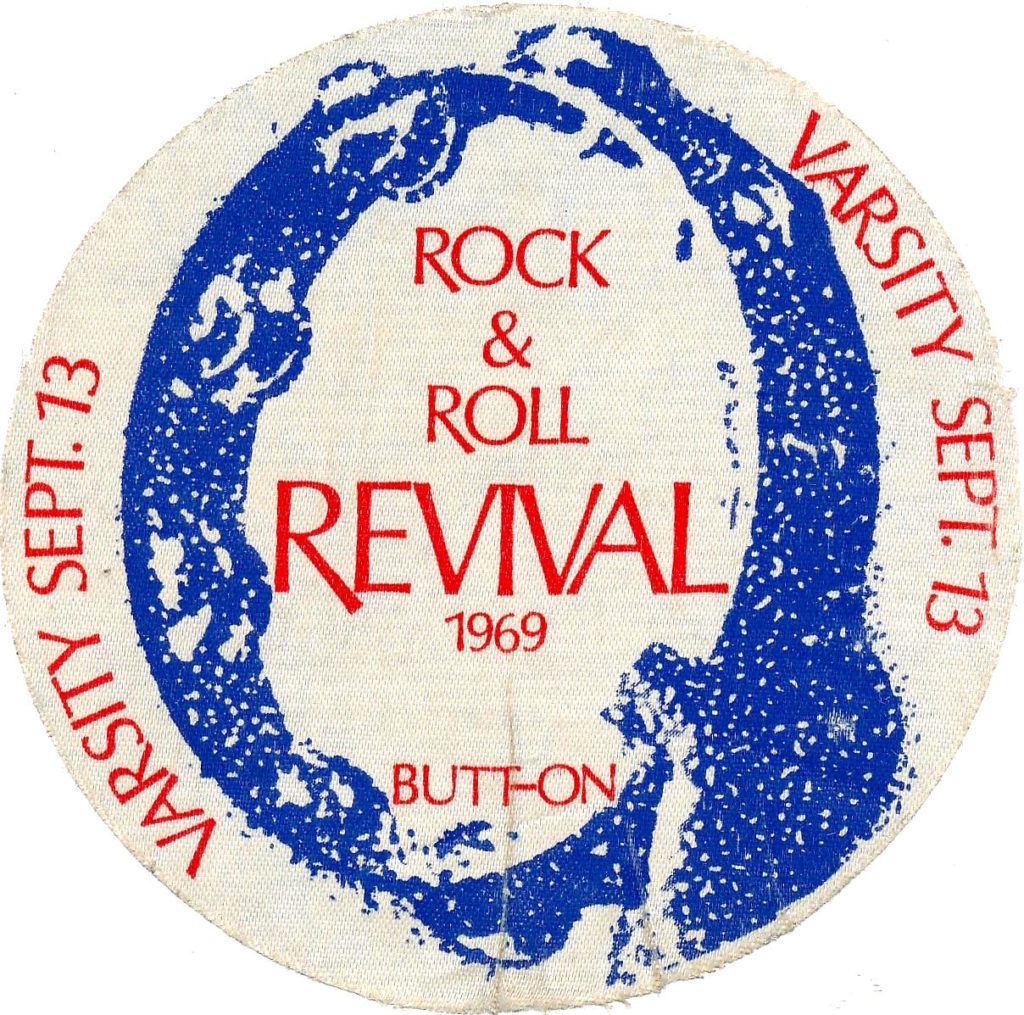
Q: If John Lennon and the Plastic Ono Band was the seismic moment that night, was there another act that performed that ‘made the pizza wiggle’ as guitarist Elliot Ingber would say.
A: At that Toronto Pop Festival in 1969, it was Tony Joe White backed by Booker T. & The MG’s at that stadium, leading up to the Doors and John Lennon & The Plastic Ono Band. They blew everybody off. Seeing Tony Joe White with that Stax Band was like if Elvis (Presley) had stayed at Sun Records in 1969 and had a better version of Credence Clearwater Revival behind him. With keyboard.
Remember, Tony Joe White is a great guitar player, besides a great songwriter, so you had the two guitarists, bass, drums and keyboardist up there, and it reinforced the musical relationship that Toronto and Memphis always had. The soul and gospel thing. It hits you. Even though Tony Joe White is from Louisiana, but by then he had been out. It was the devil’s music in cinemascope live on stage.
It showed that Booker T and the MG’s could work in a stadium. Al Jackson the drummer was tremendous. I mean, Charlie Watts probably studied him.
The Booker T. and the MG’s with Tony Joe White was one of the most astounding things I’ve ever seen on stage. The best artist that night was Tony Joe White when he played ‘Polk Salad Annie’ he had Booker T. and The MG’s behind him. That moment of Tony Joe White doing ‘Polk Salad Annie’ was like Elvis Presley. Like David Bowie and The Spiders From Mars at the Santa Monica Civic Auditorium on his first American tour in 1972 or in 1966 Jim Morrison pretending to be a heckler at Ciro’s nightclub in Hollywood from the audience and heckling the rest of the Doors before he went on stage with them, before anyone knew whom they were. It was part of the act.
Q: Detail the concert environment and situation around the Lennon Plastic Ono Band appearance.
A: Remember, everyone was in a foreign country. And remember, Canada is not America. It looks like it is because it’s on the same continent but it’s a different country. Remember, most people in L.A. bands aren’t from L.A. They don’t have a geographical link anyway. Because they are all carpetbaggers in California. And then, here they all are in Canada. And all the white guys wouldn’t dare strut with all the black Gods around who invented the stuff that the white people stole from. White people stole rock ‘n’ roll from black people. And there were too many rock pioneers around the room for any white guy to start strutting and might have gotten his ass kicked. So the strutting was not going on or the camaraderie. And musically, everybody was good that day. People were fascinated to see a Beatle in a non-Beatle situation.
We showed up at noon at the place. It was a pretty brutal situation because a police official came up to me and said, ‘If there is a riot here, and you don’t stop it you will never leave Canada Toronto alive.’ ‘Yes sir.’ That was pressure. The promoters said to me, ‘When you do the live album, make sure to include our names in the intro.’ They also were to pay me the other half of the $4,000.00 promised. So I had to juggle.
Then, a guy came up to me, dressed in blue, right out of a Brian De Palma movie comes up to me and says in a serious voice, ‘I am Mr. Blue. Take me to John Lennon now.’ He had blue shades, blue pants, blue boots, blue jacket and blue shirt I got a very bad feeling about him. So I told the police to immediately to remove him from the event. He looked like Robo Cop. I always thought Mr. Blue was a prototype Mark David Chapman.
Q: And the actual time just before John and the group came on stage
A: So I see the Plastic Ono Band. Lennon was nervous. ‘Are you all right?’ ‘Yes.’
20,000 people showed up and the big moment comes and the lights are blinding. Everything is on and John Lennon summons me to the apron of the stage on the side by the canopy. I was dressed in a purple suit. He was in a white suit. This was not the time to have a MIDEM Publishing-like discussion
Then John threw up. And he started to cry. He said, ‘I’m terrified. Imagine if you were in the Beatles as the only band you’ve only been in your life. The first time you are to step on stage with people that weren’t in the Beatles. You’re about to go on stage with your wife, a friend, a friend, and a complete stranger with songs you had learned acoustically on an airplane on the way over from England with jet lag. You would be terrified. Do something so the kids don’t know how scared I am.’ He was that vulnerable.
That’s all he knew. ‘Do something! Please, do something so people won’t know how afraid I am to go out there.’ He went ahead of his band. They were behind him. He was in a bad way.
Q: So naturally, you saved the day and supplied the remedy, Dr. Kim.
A: I came up with the following. So, I had seen a movie a decade before, in Catholic grade school, Our Lady Of Fatima based on The Blessed Virgin appearing in front of a bunch of kids appearing in a cow pasture in Portugal in the early 20th century. They had candles and matches lit to honor her presence.
So I figured, and told everybody in the place, they all think John Lennon is God and this is a religious experience and a religious experiment. I said to myself, why don’t I take this to the religious level by subliminally and recreating Our Lady Of Fatima with fire and say the introductory words…‘Plastic Ono Band please say hello to John and his friends with your matches and your lighters.’
Kim Fowley can be credited with inventing the idea of lighting matches and lighters at rock concerts. In 1969 in Toronto, it wasn’t as much a stalling tactic for John to compose himself but to put an amber hue over the entire throng and suddenly it was a religious spectacle. Because John Lennon had a religious position in the culture. And so did the Blessed Virgin, so in my mind there was no difference between our Lady Of Fatima and the Plastic Ono Band showing up, and he was dressed in white, by the way.
So the request to Varsity Stadium to please turn off the lights and when I said the word ‘Plastic Ono Band’ at the count of three I want everybody to light matches simultaneously.’ It was a welcome in a very friendly beatified way for John and his friends.
On the live album, you’ll hear ‘Get your matches ready. Brower and Walker …Present The Plastic Ono Band…’ 20,000 matches were lit. It was a beautiful amber glow and everyone let out a collective gasp and at that moment, Lennon, who was a Beatle, realized there’s the moment that will take away from the nervousness of the moment and they went up to the stage and went right into ‘Money.’ And it was clear sailing from him and them all the way until the end. It seemed like an hour. Yoko sang in a bag.
So that helped the spiritual subtext of the event. I had talked to Lennon three years earlier but in 1969, everybody had gotten scruffier after the Mod 1966 and the English version of psychedelic culture and Syd Barrett came along and everybody got dirtier. The guys got dirtier and the girls all threw away their bras away and didn’t shave their armpits or their legs. So everybody was getting more ‘organic.’ John was a Beatle and larger than life, so nobody was aware if he was tall or short. Yoko was in the band and went into the bag at a certain point.
Q: Run down the set list?
A: They just went on and played. They didn’t sit there and kibbitz or talk to anybody. The repertoire performed fit the theme of the event which was a rock & roll revival booking and appropriate to open with ‘Blue Suede Shoes’ and play ‘Money.'
And do ‘Dizzy Miss Lizzy’ from the Larry Williams’ songbook.
I had met Williams the year before in Hollywood at an Epic Records party in Hollywood. He along with Johnny ‘Guitar’ Watson who in 1966 or ’67 produced my friend Chris Darrow’s band, The Kaleidoscope at Columbia Studios. Chris in the very early ‘70s then met Lennon one time at Liberty Records in Hollywood. I knew Eddie Cochran, produced Gene Vincent, and Chris Darrow saw Ritchie Valens live and recorded with the Crickets, Buddy Holly’s band. Like Lennon, who met Gene Vincent, Chuck Berry, Elvis Presley and Little Richard so on some level we’re all in this very exclusive club together.
That night Plastic Ono Band did simple rock & roll songs where sloppiness is a charm, the songs, it’s nighttime outside and people are drunk and stoned. Klaus Voorman on bass was fine. He had been in Manfred Mann before and did one of my songs. Alan White was a member of Yes at the time or a bit later. Eric Clapton had been in Blind Faith the year before and I was at their L.A. concert at the Forum in Inglewood.
I had known Eric from England at The Richmond Athletic Club days when he was in The Yardbirds. And, I had met him again when Cream was forming. I had also ‘jammed’ a couple of months earlier onstage with Blind Faith at The L.A. Forum where, in the dressing room, Eric asked me to come on stage if I knew the words to ‘Sunshine Of Your Love.’
For the encore, I went out there with Bonnie Bramlett and didn’t know the words. I was bluffing, so I said into the microphone ‘Legalize Marijuana.’ And they turned off the sound. And that’s how we got away at the encore. So Eric was friendly. He knew Jack Bruce had covered one of my songs during his earlier Manfred Mann days for an Australian EP, Long Hair Unsquare Dude Called Jack, that I had sung on the last every Hollywood Argyles single, an anti-hippie song on Chatahootchie Records which went top ten by the way in Saigon. At any rate, Eric and I connected.
Q: John Lennon on stage…
John Lennon was a Beatle. You heard that voice and there he was…a Beatle. It was Gandhi and a human jukebox showing up.
I had drunk some beer that day and on the original vinyl pressing of the live album you can hear someone saying ‘Kim! You’re always on the wrong mike. Kim!’ And I fell off the stage into the pit drunk because I could not believe what I had seen. Then I jumped back up on stage. The Doors had to follow this and this was the first and only time you had John Lennon and Jim Morrison in the same bill. I don’t think they posed for photos.
Q: And what about Lennon’s guitar playing that evening?
A: As far as John’s guitar playing that night there are four people who were great rhythm guitars players in the history of rock and roll: Eddie Cochran, John Lennon, Joan Jett and Keith Richard. The four supplied the pulse of whatever band they were in and they could build a whole rock & roll universe around the pulse of their rhythm guitar playing. And their guitar was attached to their voice. And those four people, it’s beyond lead guitar and flashy stuff.
It’s the rhythm guitar driving the engine of a rock& roll band. Jimi Hendrix did something else in his trio as the Jimi Hendrix Experience as well as the Band Of Gypsys. He took guitar playing somewhere else. In terms of strict guitar, bass and drums four-piece or five-piece and that’s where I rate the four of them.
Q: You knew the Doors well before Toronto.
A: The Doors’ John Densmore was a jazz drummer. You also had a jazz keyboardist and a jazz guitarist all playing the blues with a real great poet and actor fronting it. It was tremendous. It was theater. Jim Morrison was the best white in-person performer. Better than Elvis. Better than Jagger. Because he did what Howlin’ Wolf and Lawrence Olivier did. He did it all at the same time. He did William Shakespeare and gutbucket together. And only PJ Proby rivaled him and David Bowie came in third.
Jim could sing in pitch, he had the image and the poetry. He understood theater. Manzarek supplied a pulse, and Robby the guitarist is never given the credit what he brought to the table in 1967. The Doors were not a rock & roll band but gave you a rock & roll feeling. And the only band that did that was the original King Crimson. ‘Cause they weren’t a rock ‘n’ roll band, either, but when you heard Court of the Crimson King, and Pink Floyd ’67, they were the only bands who had some Wagner with a rock & roll attitude.
Q: How did you bring the Doors to the stage?
A: After Plastic Ono Band departed, I then said “Get ready for The Doors who are coming on next!” Then there was an hour wait.
The Doors started doing their thing. Around the third song of the set, out comes Chuck Berry, who saw the movie cameras wanted to walk on stage and approached Jim Morrison on stage and Jim Morrison stopped the show and said, ‘Chuck, you never let kids jam with you. You can’t jam with us. Be nicer to kids and maybe someday we’ll let you jam with us.’ And he was ordered off the stage by Jim Morrison. ‘Next time some guys want to jam with you, remember. Get off our stage.’ The place went wild in front of the whole stadium. They were the Doors.
The Doors had to follow everything. The Doors were excellent that night. They had to be with all that going on. They closed the show and had to follow John Lennon, the Plastic Ono Band with Eric Clapton. That was hard.
This was the year of the Miami Doors incident. So they did the Doors. This was going down in real time. It was music of the moment. It was the Arctic Monkeys playing. Current bands. Whoever was on the radio was suddenly in front of you. Or, what you remember from the radio years before in front of you. No passing of the baton or the end of the decade. Any of that. This is fun. Wow. I just saw a Beatle. I saw the Doors…
I remember a while afterwards, Ray Manzarek, who I knew from L.A., felt Lennon’s appearance was some sort of psychic release from the pressures of being a Beatle. In a non-paparazzi time of 1969, no one had the brains to photograph John Lennon and Jim Morrison together. Nobody has the picture, because no one thought of taking one because there wasn’t a paparazzi culture there to document it. They did speak because they had to. Because one followed the other.
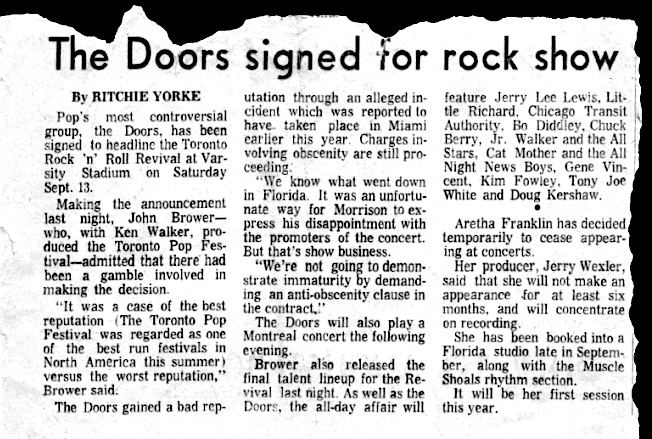
Q: And then the following day post-show encounter with John and Yoko.
A: The next day at Thor Eaton’s house where John and Yoko were staying with the Plastic Ono Band. I was sitting outside with the two promoters and they were happy. ‘Kim Fowley you really earned your money. You’re gonna be on the album, maybe they’ll be a movie someday. Isn’t life grand?’
Then, Eric Clapton came out. And he said, ‘John and Yoko want to talk to you.’ Eric escorted me to the sitting room of this mansion and a very quiet John Lennon who was dressed very casual was sitting on the floor on a Gandhi position, looking at Yoko who was sitting in a chair, and Klaus was next to them. And Eric said, ‘John and Yoko, Kim is here.’ ‘Kim Fowley.’ And I was delighted. ‘Thanks for introducing us…’ We shook hands. He was very gracious to me and Klaus Voorman was in the room and so was Alan White.
And I had always promised myself in my rock & roll journey when I was in the middle of it that I should always ask the right questions because I got the historic part of it. Because previous to this in 1965, I met Bob Dylan and asked him his concept of songwriting, and he said, ‘Storytelling and asking questions.’ And before that in 1963, I asked Brian Wilson at Gold Star recording studio one day, ‘What is the basis of your songwriting?’ And he said, ‘Well, school is nine months a year and the summer holidays are three months and you write about that and getting in trouble with your parents.’
So I had to ask the question to John Lennon. ‘Why did the Beatles break up?’ The whole room stopped, and Lennon looked at me and said, ‘May I give you an example?’ ‘Yes.’ ‘It has nothing to do with the wives and the women we married. He said the group was based on us re-inventing our favorite records’.
I said, 'Give me an example?' He said, ‘You know ‘Why Don’t We Do It In The Road?’ We were improvising on Canned Heat and it was our message to Canned Heat and Norman Greenbaum who had 'Spirit In The Sky’ at the time. When you do that type of music put more humour into it. We liked Canned Heat but didn’t think they had enough humour. So we wrote that song as taking the Canned Heat formula and doing something else with it. When The Beatles stopped re-working or improving on the formulas of their favorite songs that’s when we ceased being a band. Because that’s what we did. Because we improved on formulas that we loved of our favorite records. We stopped listening to records and improving on the formulas, the techniques and expanding, and that’s when we ceased being a band.’
What that meant to me was that the Beatles were the ultimate expanders and derivative detectives of the essence of songs. In Hamburg, they would play hours every night and must have analyzed why a Chuck Berry or Little Richard song worked and when they started writing their own songs those techniques they employed.
And the other thing that John didn’t mention was that BBC Radio at the time would play all kinds of music next to each other. You could hear Little Richard, Hank Williams, and Kenny Ball back to back. You could hear Julie Andrews singing The Sound of Music and then Gary U.S. Bonds right after that. So those guys had this tremendous musical palette to listen to and then if they started doing covers it was obvious perhaps. So Bo Diddley and Maurice Chevalier were equal to them.
So when John said to me that we stopped improving on the formula of our favorite record, John was enjoying the fact that he could go on stage and do something without whatever the restriction of being a Beatle was. He didn’t say there was a restriction. He didn’t say it but it was like playing football after you leave Manchester United team and you go play a football game in the park with your friends from the neighborhood or pub. It’s gonna be different if you’re gonna be David Beckham than if you’re in a jersey out on the pitch, or the field, you know.
He hadn’t played music outside the Beatles. The last time he played as the Plastic Ono Band was that December at the Lyceum in England when it was billed as the Plastic Ono Supergroup.
That’s when the Beatles stopped being the Beatles. He didn’t mention all the things they’ve written about since. To him the Beatles ended because they didn’t want to reinvent music they liked anymore. I told him to have a nice trip back. Goodbye. Never saw him again.
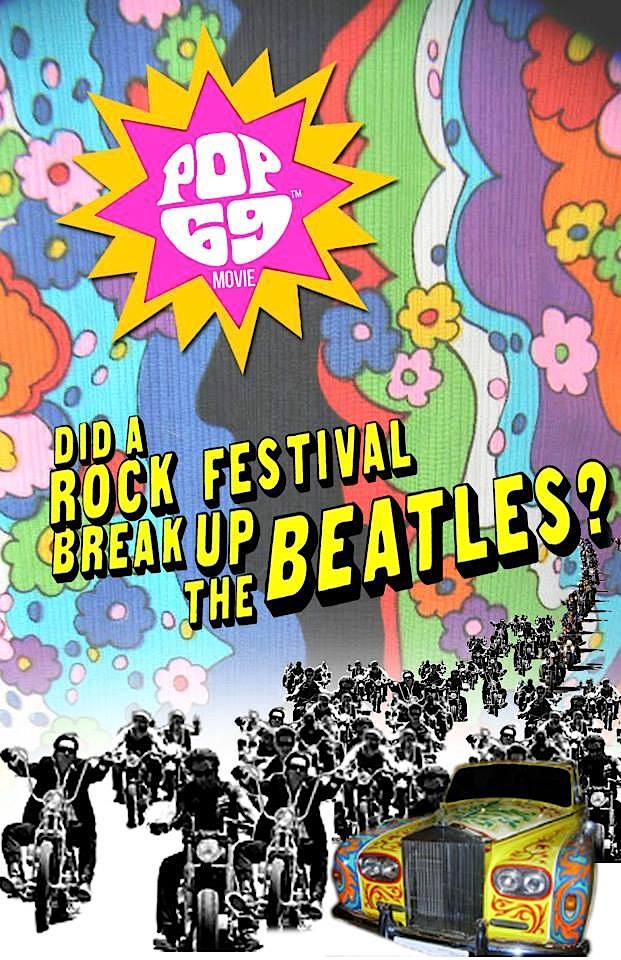
Q: Reflect on John Lennon now.
A: Rock & roll died with Elvis Presley in 1977 and rock died in 1980 with John Lennon. It might have died again with MTV. What happened was, as Clive Davis told me in his office, MTV assigned pictures to the music where you made your own pictures. When you listened to music of a great record, you would remember the day were you heard it or what it meant to you, where you were sitting or the car you were in. But once some guy put an expensive video on, you always remember the song by the visual image assigned to it, which ruined rock & roll.
Same thing that has ruined politics in America. The presidential elections are determined by who is good on TV. Not who would be a good person to govern or to lead the country. So too much media takes away the experience of listening to music. And Elvis was the King of rock & roll and Lennon the next King of hard rock, or rock, what happened, and then MTV showed up and after that and you had disco.
John Brower
Q: Talk to me about this monumental endeavor.
A: I called Lennon at Apple Records asking if he wanted to emcee the gig. Lennon said, ‘No…but he would like to play!’ We went from selling a couple of thousand seats to selling 25,000 tickets when it was announced Lennon would play.
Q: Did Morrison and Lennon actually meet at the show?
A: When Morrison and the Doors heard that Lennon was now going to play, he asked [manager] Bill Siddons to set up a meeting to discuss who would headline the show.
There was a knock on the locker room door and it was Bill [Siddons] and Morrison asking if they could talk to John and I. I grabbed John and we met in the hallway. The two singers didn’t acknowledge each other or shake hands but Siddons wanted to ask Lennon if the Doors could go on before Lennon.
John’s eyes opened wide and he said, ‘No, you guys are the headliners. That means you go on last, that’s the way it works.’ John was not about to be upstaged by Morrison and whatever antics he might pull off. Just then, Little Richard appeared, and said to us, ‘Hey, I will headline! I will headline!’
I then told Morrison, ‘Look, I have already paid you guys, so if you don’t want to play, you can go back to your hotel room and relax. No problem.’
Morrison nodded at Siddons and they agreed to go on after Lennon. Then Morrison said, “One thing: we want to be on the side of the stage so we can watch the set.”
Rodney Bingenheimer
Q: You were a music reporter at the time and in Hollywood writing a regular music column for Go! Magazine and went to the festival and involved in the whole trip.
A: The Doors arrived in Canada first and escorted into Varsity Stadium. When John and Yoko and the band showed up I got in the limo with promoter John Brower along with Klaus Voorman and headed for the show. We were driving and all along the way fans followed us. John told the driver of the limo to slow down because Yoko was six months pregnant. She was very friendly to me. John and I talked all about Gene Vincent and he said he couldn’t wait to see him. He talked about times they used to play pool together 10 years ago in England. In the car I played a tape of Elvis Presley singing the Beatles’ ‘Yesterday’ and ‘Hey Jude’ from the 1969 show I saw Elvis do in Las Vegas at the International Hotel. I saw it weeks before and got a cassette of the show. John was amazed and could not believe it. He was really excited he was gonna see Gene Vincent. He wanted to be on the stage with Chuck Berry and Jerry Lee Lewis. So when we met up with Gene, he and Gene exchanged autographs. Eric Clapton was in another limo. We pulled in front of the stadium and a young girl yelled out ‘Its John Lennon of the Beatles!’ And all of a sudden there were bodies everywhere on top of the limo that we couldn’t see out of it. We headed straight to the dressing room so that John could lie down for a while. We were greeted by Little Richard, Gene Vincent and Lord Sutch.
Q: What was the hang like before the gig?
A: I stayed in a hotel and shared a room with Gene. I was in the room when Jerry Lee Lewis called Gene and I answered the telephone. ‘Hello. Is Gene there?’ ‘Who is this?‘Just tell him it’s ‘The Killer’ calling…’ Later, in 1971, I was with Gene when he and David Bowie recorded a living room version of ‘Hang On To Yourself.’ Alice Cooper’s band backed Gene and it was amazing. No rehearsals for anyone. Alice Cooper went on with chickens and pigeons. Lord Sutch sang with C.T.A. We did a couple of radio interviews earlier for CKFH-FM and I got the station to play the GTO’s new single. And I gave them Condello’s new single, ‘Goodnight,’ who were a Greene and Stone act they managed. They also played Thomas and Richard Frost’s new record on the Imperial label, ‘She’s Got Love.’ I set up the t-shirt booths at the stadium. Jerry Lee Lewis went on the stage all the while believing John Lennon wasn’t even there. Also, Tony Joe White was amazing that night. It was like seeing Elvis with a guitar, and Elvis was doing ‘Polk Salad Annie’ in his Las Vegas shows which I had just seen before. I knew Alice Cooper from Hollywood and he made a big impact tossing a chicken into the audience from the stage. The Cooper band backed Gene Vincent who delivered. Jerry Lee Lewis was amazing, and Little Richard was really good. I witnessed the entire show from the wings-the only place to be.
Q: What were your expectations when Lennon and the group hit the stage and tell me about the set?
A: I had no idea what was going to be played. I don’t want to know what songs the band I am seeing are going to play or go to sound checks. Kim Fowley was really good and funny on stage to set it up. I had no idea what to expect. It was rock & roll! It was good. It was John with rock & roll and ideal for what was going on with the show around him. I didn’t really like seeing a Beatle with a beard. (laughs). He had stage fright. I know he was sick, like he had the flu. They opened with ‘Blue Suede Shoes’ with John singing lead with a little help from Yoko. The John went into ‘Money’ just like the early Beatles’ album. He did ‘Dizzy Miss Lizzy.’ It was like going to a Beatles’ concert. I had last seen the Beatles in August 1966 in Los Angeles at Dodger Stadium, sitting in the dugout with Carl Wilson of the Beach Boys. John even wrote a new song and played it that was called ‘Cold Turkey.’ Then they all did ‘Give Peace a Chance’ and a weird noisy sound happened. A high pitched noise. Then John took the guitar and waived his guitar to the amp and Eric did the same. The high frenzy was too much. Some people had to put their fingers in their ears and open their mouths and you really felt stoned afterwards. All the Doors and myself were on stage and we really couldn’t believe it. It sounded like music from the year 1992.
Q: What about the Doors set?
A: I watched the Plastic Ono Band with Jim Morrison right at the side of the stage. Jim said after they left the stage, ‘You expect us to follow that?’ Lots of people cheering. It worked in a big stadium. Jim got a little snotty when Yoko started doing her whole thing. I don’t think he was into that Bagism trip. But I was sort of into Yoko ‘cause of The Fly album and The Wedding album, so I expected some arty thing although it was a bit weird mixed in with the other rock stuff everyone was doing.” Jim had cut his hair and shaved off his beard and looked really good. The Doors rocked that night. I had seen them in 1969 at the Aquarius Theater in Hollywood and at Toronto they were pretty amazing. They did ‘Back Door Man’ with some of ‘Maggie M’Gill’ and ‘Roadhouse Blues’ in it as well as ‘When the Music’s Over,’ ‘The Crystal Ship,’ ‘Light My Fire’ and a few other songs.”
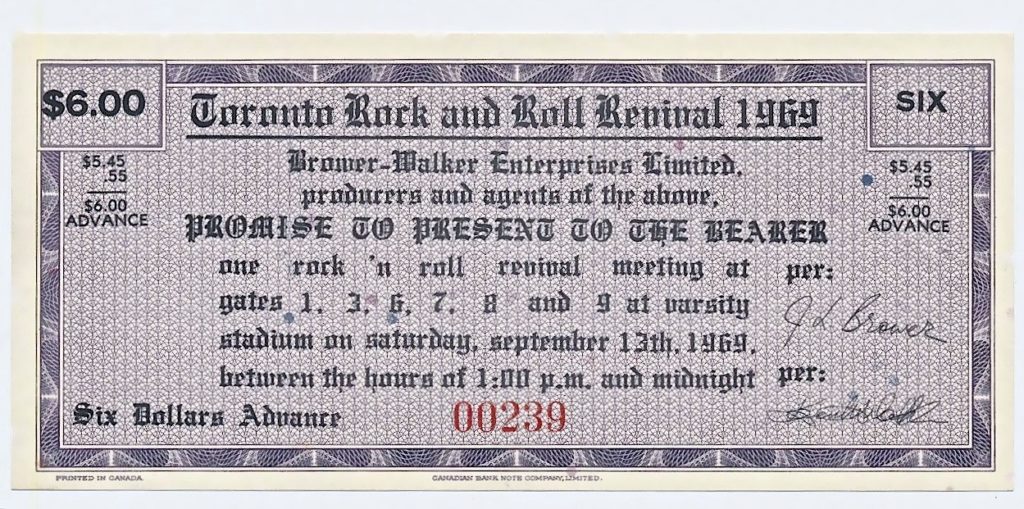
John Densmore
Q: Tell me about this Toronto concert
A: We came to Canada and at the airport, we all got into two black Cadillacs, then all of a sudden several hundred bikers started zooming along beside us, they were in a club called the Vagabonds. A hundred ‘Hell’s Angels’ types, and we’re going, ‘Hey, this is kind of cool.’ And we come into the stadium, a football stadium, and they drive the limos all the way around the entire circle of the track with these 150-200 bikers leading us. So it’s real profound. Like, ‘Oh my God. Here comes Lucifer,’ you know. It was really great.
So, I go backstage and Eric Clapton says to me, ‘Isn’t this a crazy life?’ Eric has not cleaned up his act yet. I didn’t get to see John. And we have to follow John and Yoko, and it’s a monster band. Eric, Klaus, Alan. Ridiculous. They start and then we hear this noise coming out of the speakers. Everyone on the stage is saying, ‘What the fuck is going on here? Some feedback with their set? And then everyone notices a bag on the floor of the stage with a wire leading from it. Yoko is in the bag with a microphone warbling. It was great. We didn’t know what the fuck was going on. ‘Oh, wait a minute, she’s in there.’ Really outrageous.
I mean, you know, John Lennon and the Plastic Ono Band walked out on stage and it was the biggest roar of the century and we’re supposed to follow this group?
Kim Fowley introduced us and we played the best we could. In my opinion, we were fine. We weren’t great. We weren’t lousy. We were fine. But everyone was so in awe of the Mop Top…It was great.”
D.A. Pennebaker
Q: You saw and documented the Toronto moment but didn’t film The Doors.
A: Morrison had come to me a couple of times and he obviously was interested. He and Bob Newirth came and showed me Jim’s film. His student film HWY. I was not impressed, but that didn’t mean anything. And I was interested in anybody who was a poet and wanted to make films. That was interesting to me. I didn’t look down like this was amateur. But the fact is that he was a boozer. And, you know, that’s a hard thing to make a film about. My father was a boozer. You can’t count on getting their real lives. You get something else. They put on a kind of a show. And that was a problem. And, Morrison was funded. He had some kind of money. And I had some concerns what he would look at in 20 years. When the Doors got to Toronto, they were all very puffy. They looked like chefs in a big restaurant. And I would have shot them, but we couldn’t afford to stay for the two days. But I heard them and we couldn’t afford the tracking. We paid for the track for Yoko and John and gave it to them to release as a record. It’s an amazing thing. Coming at the end of that whole concert it was the end of the Beatles. They understood it and at the end they fell silent. And John looked out and it was kind of scary and nobody was there. It was a funny moment. And they all left the stage and I remember a piece of paper blowing across the stage and slowly the audience came to life. I thought, ‘My God. This is a fantastic wake.’ Yoko was so crazy, but still, there was something so fascinating about what she did. You could see she did it with absolute conviction. What she was bringing to me was a kind of funeral cry for something that was lost. At the time I wasn’t sure how I felt about it. But I did welcome it.
Gary Pig Gold
"Saturday, September the 13th of 1969 broke particularly warm, bright and sunny over the suburbs of Toronto," recalls decidedly suburbanite Gary Pig Gold. "And this was to be the day the drummer in my very first teenaged garage combo agreed to accompany me all the way into the Big City in order that I could buy my very first teenaged guitar. But! An electricone this time; the better to approximate the walls of sound on our bass player's 'Summertime Blues' 45 ...Blue Cheer version, that is. "Only one problem though: I had only managed to accumulate twenty Canadian dollars with which to accomplish this most momentous of tasks. Which of course upon arrival dictated we bypass the big downtown music stores and traipse directly instead over to that string of seedy-and-then-some pawn shops which littered – literally! – the city's infamous Church Street strip. Needless to say the proprietor of the very first establishment we entered certainly must have seen us coming, as in answer to my request he pulled from the back room a flaming once-red electric (sort of) guitar of questionable pedigree, not to mention intonation which cost – surprise! – exactly twenty dollars. The grin on my face as I emptied my pockets was equaled only by the smirk on said salesman's face as he packed my new best friend into a 'complimentary' cardboard carrying case and sent us triumphantly upon our Blue Cheer way.
"However, strolling back to the train station drummer Mike and I were suddenly struck by music – loud music; rock and roll music! – drifting enticingly overhead from some far-off location. It didn't sound like a record ...or a radio... and as we ventured northwesterly it grew ever louder and absolutely groovier by the block. Soon enough we found ourselves, along with about a thousand or so other curious kids milling outside the University of Toronto's Varsity Stadium, wherein it seemed like there was an actual bonafide rock festival going on. Could it... Could it be the Great White Northland's very own Woodstock a-happening?!!
"Eagerly circumventing the perimeter of the gigantic structure we came upon one rear entranceway guarded by a genuine dyed-in-tie-dyed-wool hippie – yep, just like those our parents had warned us about via the pages of The Toronto Daily Star – who said 'Hey, man. You guys wanna come on in?' welllll... Explaining we'd just lost our last remaining $20 on Church Street he replied 'Don't worry, man. Just sneak on in. I won't tell anyone. Go on!'
"But alas, what with the complimentary elastic band already giving way 'round my pawnshop guitar case [sic!], and terrified said instrument might fall into some wrong hands altogether I regretfully said 'No thanks,' clutched my six-strings ever tighter, and Mike and I continued our journey back to Union Station just as it sounded like Jerry Lee Lewis was taking the stage. We tried consoling ourselves on the ride home that not only would there be other rock concerts to sneak into in our futures, but that with an actual electric guitar finally in our arsenal, someday WE would be playing Varsity Stadium. And the Killer would be opening for us!
"Now, here's the punchline: A few hours later, safely home after Saturday dinner, my phone rang. It was drummer Mike. 'Gary! Quick! Turn on CHUM-FM right now!!' he gasped before hanging up. Hmmm. Downstairs to my radio I went, just in time to hear our favorite jock gasping 'And I don't believe it, ladies and gentlemen, but it's true! As we report to you now, live from Varsity Stadium, none other than JOHN LENNON has just taken the stage! Yes, JOHN LENNON. This is unbelievable, ladies and gentlemen!!'
"Eight years later I also turned down two free tickets to go see April Wine at the El Mocambo ...yes, on the night it turned out the Rolling Stones were playing instead. But I really do much more miss having missed the world premiere of the Plastic Ono Band right there ten blocks northwest of Church Street near the end of one of the greatest 1969's of my life. But every September 13th I still pull Live Peace in Toronto out for a spin on the ol' Pig Player ...Side 2 and all, I'll have everyone know.
"Oh, and that semi-red $20 electric special from Church Street? Turns out its frets and neck altogether were no more durable than its cardboard carrying case: the poor thang survived less than two months of my adolescent Blue Cheering all over it.
"I certainly learned my lesson though: I spent nearly 50 dollars on my next guitar..."
Harvey Kubernik is the author of 15 books, including titles on Leonard Cohen, Neil Young, the Monterey International Pop Festival and the Beatles.
His 2017 volume, the acclaimed 1967 A Complete Rock History of the Summer of Love was published by Sterling/Barnes and Noble. His Inside Cave Hollywood: The Harvey Kubernik Music InnerViews and InterViews Collection, Vol. 1 was published in December 2017, by Cave Hollywood. Kubernik’s The Doors Summer’s Gone was published by Other Cottage Industries in March 2018.
The Doors: Summer's Gone has been nominated for the 2019 Association for Recorded Sound Collections Awards for Excellence in Historical Recorded Sound Research.
In November 2018, Sterling/Barnes and Noble published Kuberniks book, The Story of The Band From Pig Pink to The Last Waltz, written with his brother Kenneth Kubernik.
During 2019, Harvey Kubernik was a feature interview subject for director Mathew O’Casey’s 90 minute BBC4-TV Digital Arts Channel program Christine McVie, Fleetwood Mac’s Songbird. The cast includes McVie, Mick Fleetwood, Stevie Nicks, Neil Finn, Mike Campbell, Heart’s Nancy Wilson and producer Richard Dashut. Broadcast is scheduled for late September or October.
In May 2014, filmmaker Matthew O’Casey lensed Kubernik in his BBC-TV documentary on singer Meat Loaf, titled Meat Loaf; In and Out of Hell, broadcast in the US. market in 2016 on the Showtime Cable TV channel and now out on DVD via Universal Home Video.
Harvey Kubernik was also taped for the 2013 BBC-TV documentary on Bobby Womack Across 110th Street, directed by James Meycock. Womack, Ronnie Wood of the Rolling Stones, Damon Albarn of Blur and the Gorillaz as well as actor Antonio Vargas are featured.
In the 2016 Neil Norman-directed documentary, The Seeds: Pushin’ Too Hard, Kubernik appeared in an on-screen feature interview, along with Bruce Johnston, Iggy Pop, Kim Fowley, the Bangles and Johnny Echols of Love.
Kubernik has done stage lectures and movie analysis at the University of Southern California School of Cinema-Television, about filmmaker and pioneer cinema verité director and D. A. Pennebaker examining his Bob Dylan Dont Look Back (1965), and David Bowie Ziggy and the Spiders From Mars (1973), documentaries for instructor Dr. David James.
This century, Harvey penned the liner note booklets to the CD re-releases of Carole King’s Tapestry, Allen Ginsberg’s Kaddish, Elvis Presley The ’68 Comeback Special and The Ramones’ End of the Century.
In November 2006, Harvey Kubernik was a featured speaker discussing audiotape preservation and archiving at special hearings called by The Library of Congress and held in Hollywood, California.

